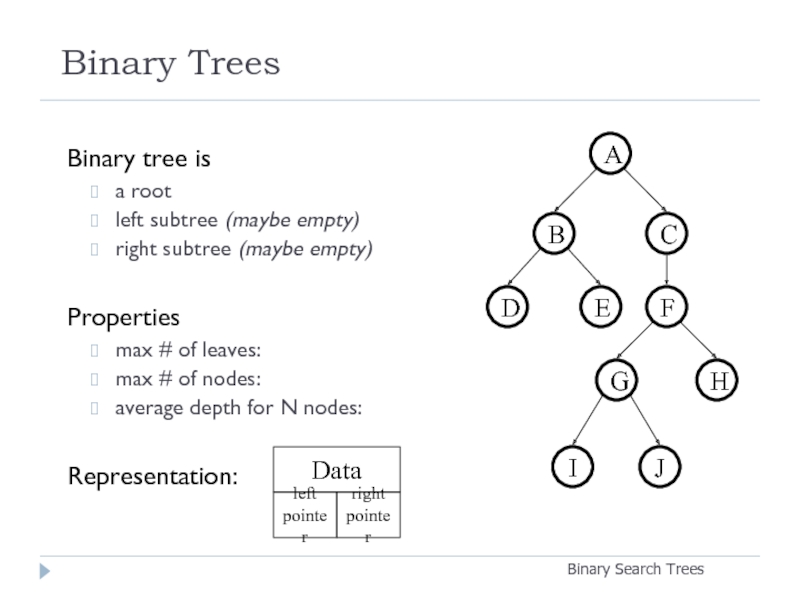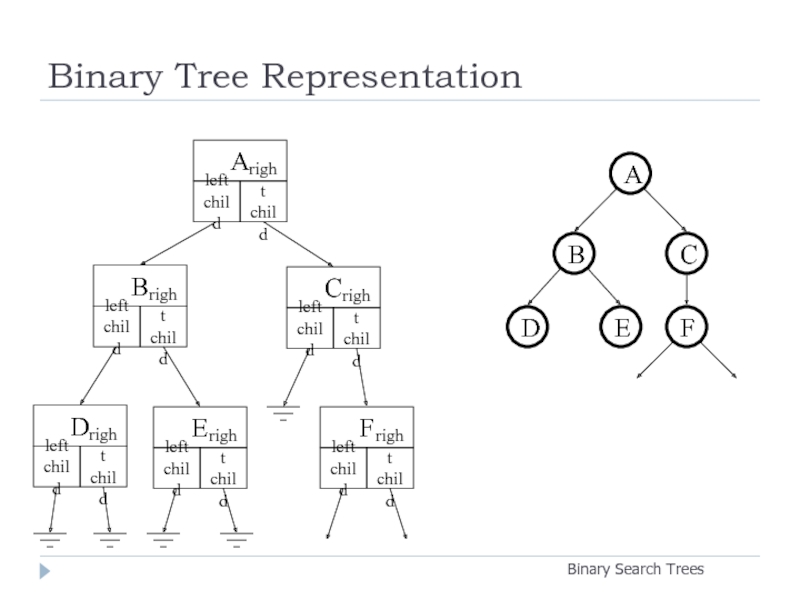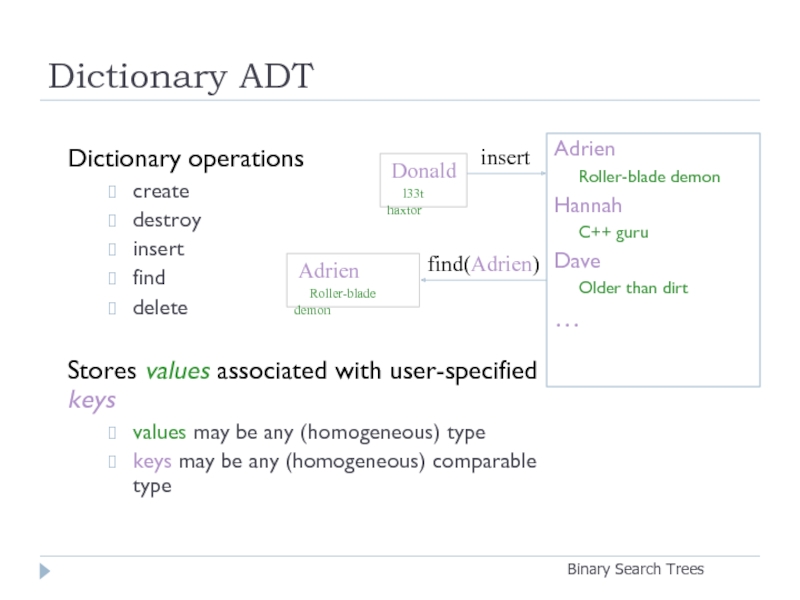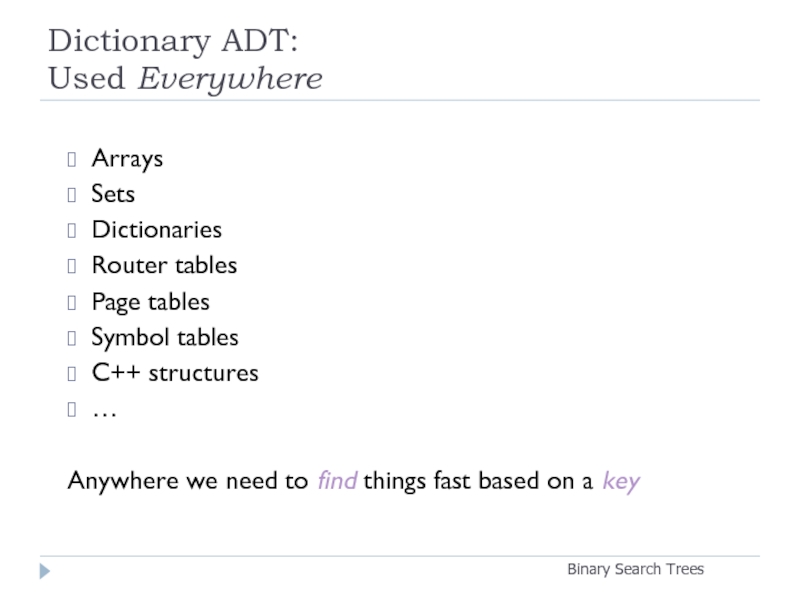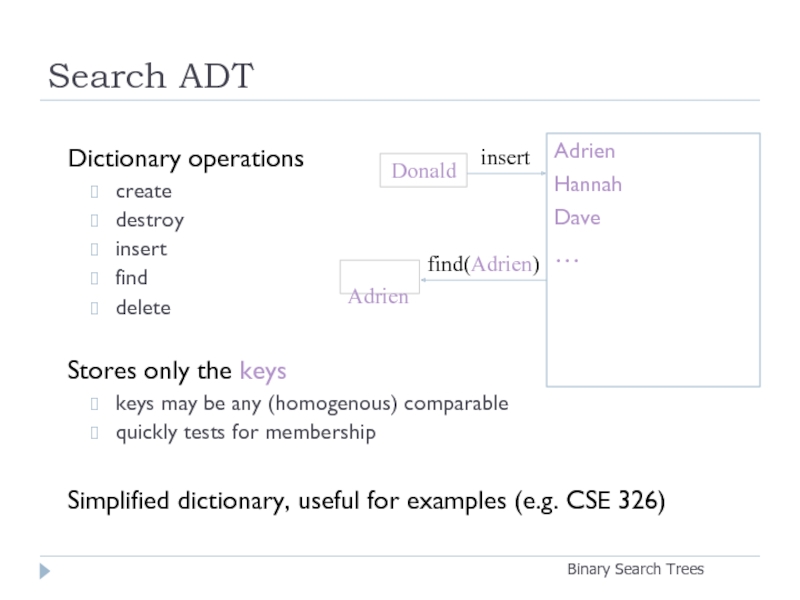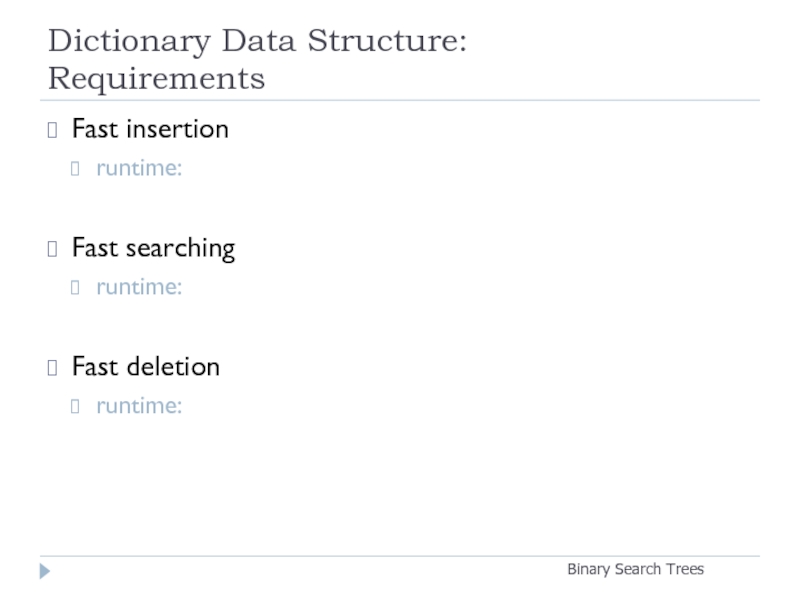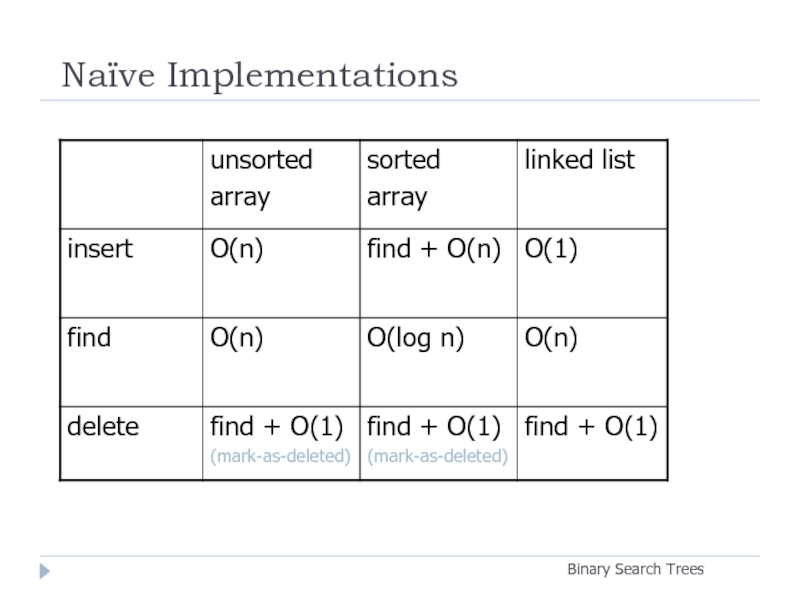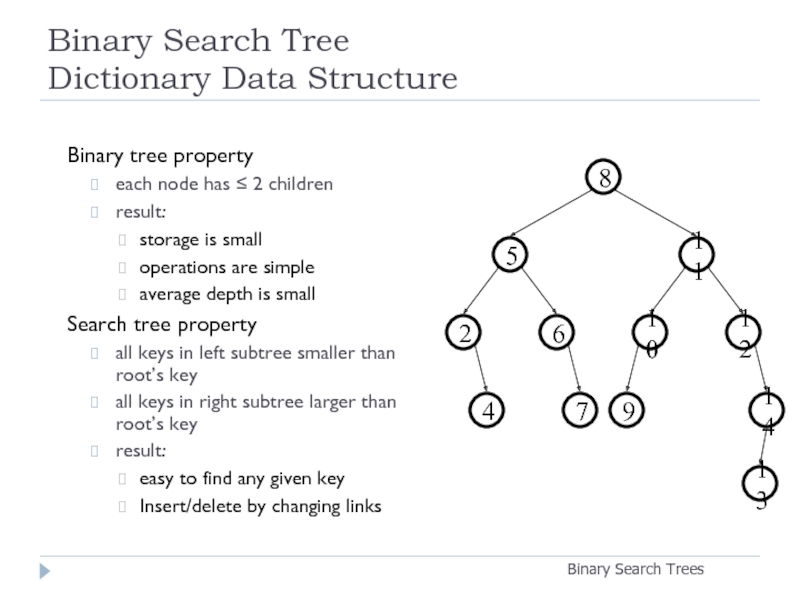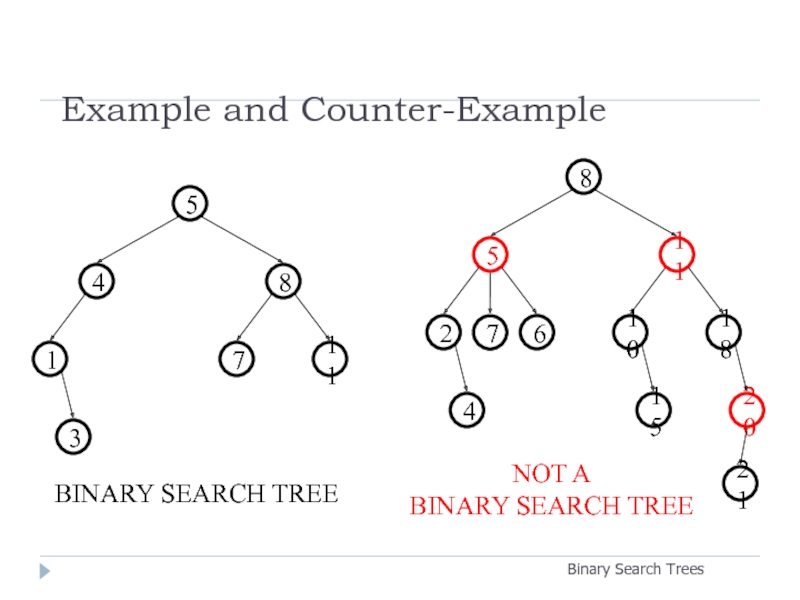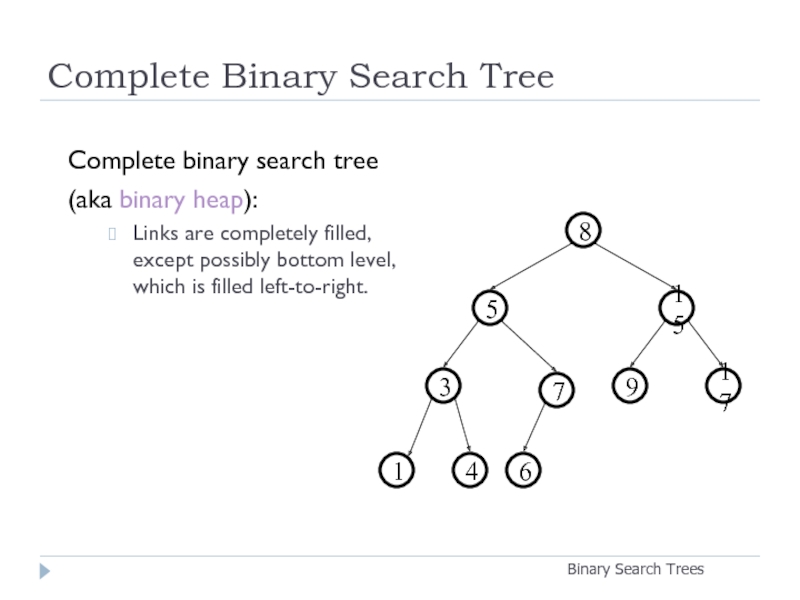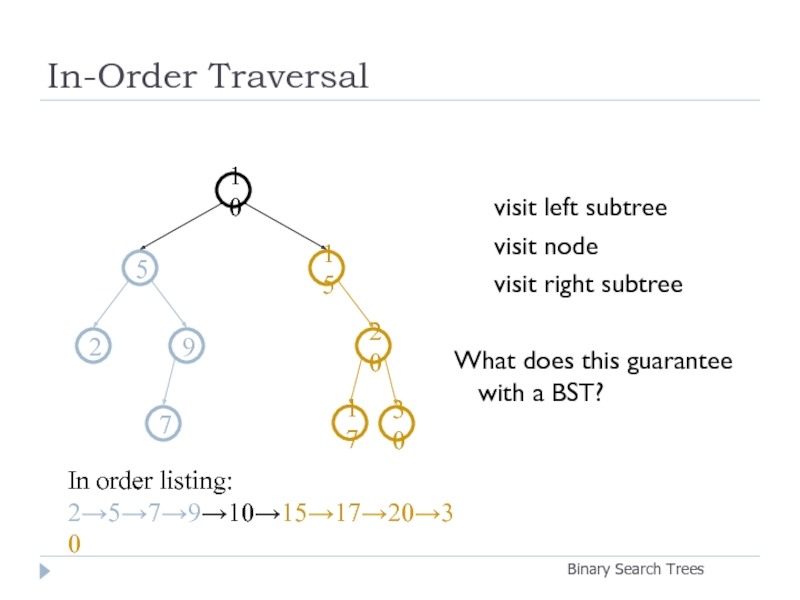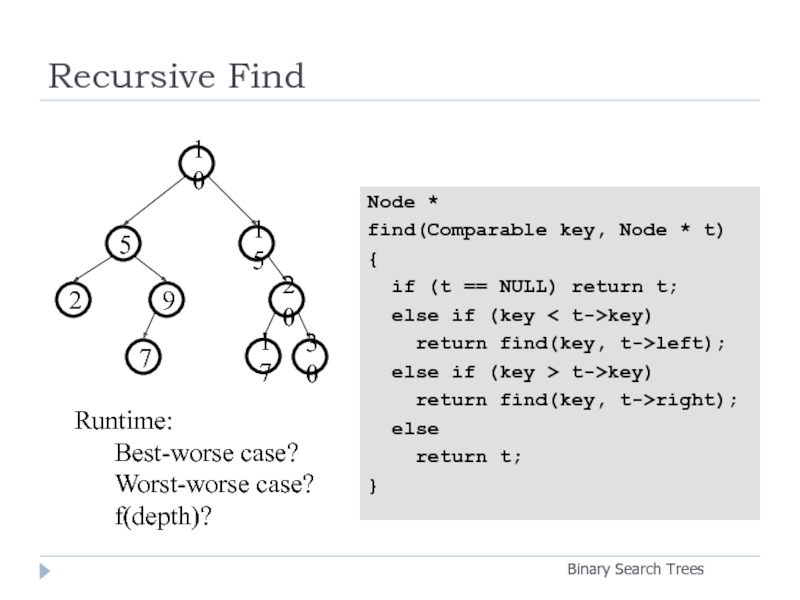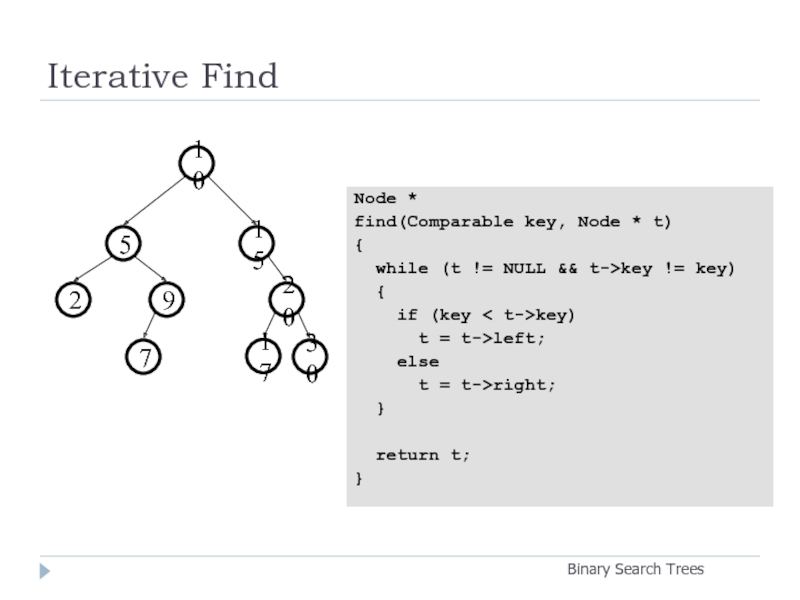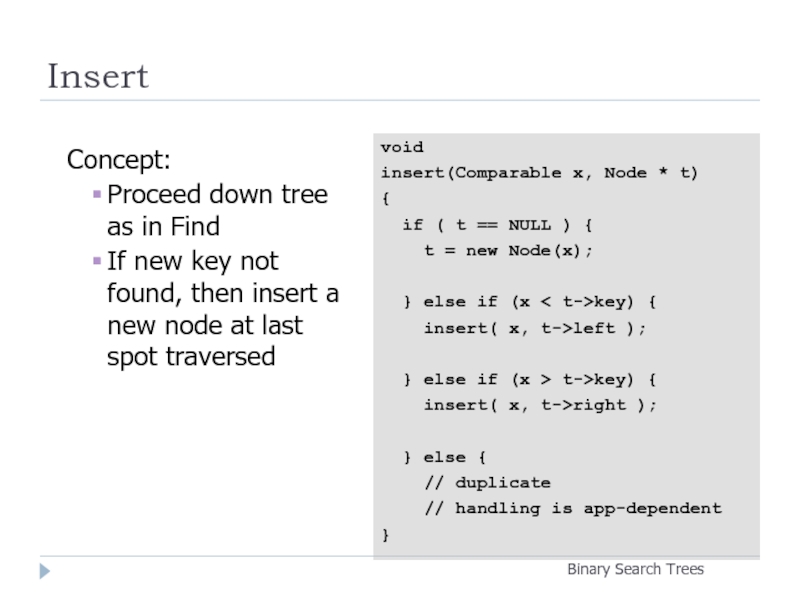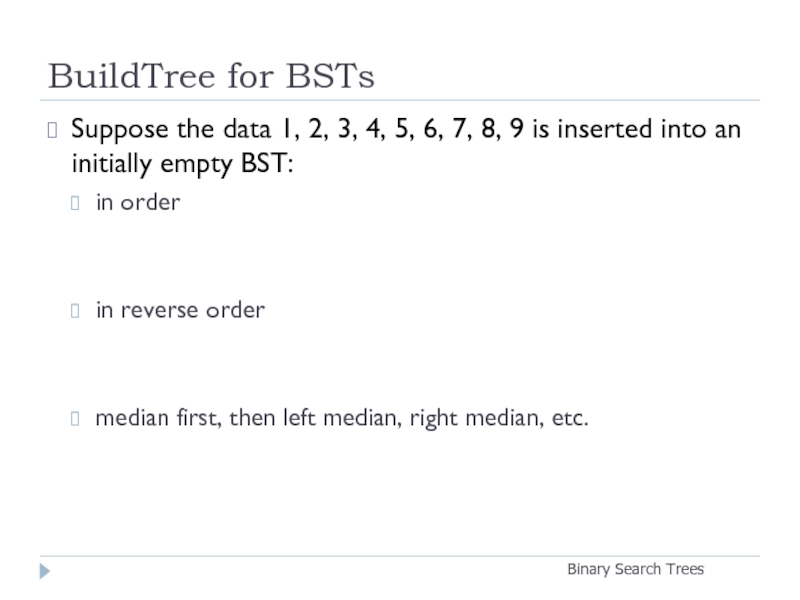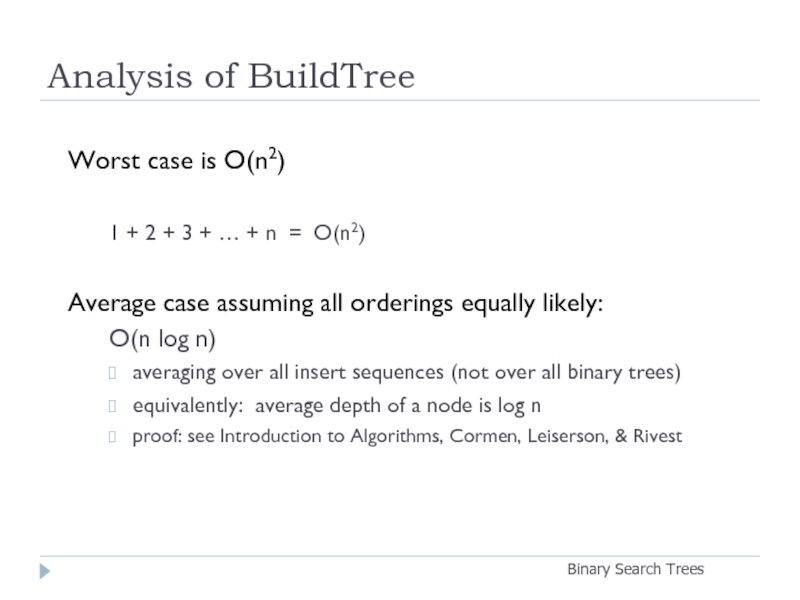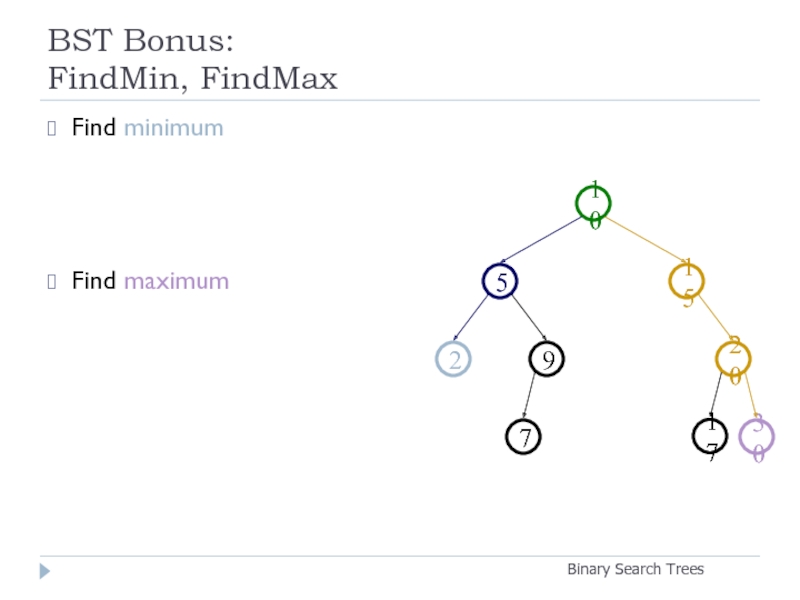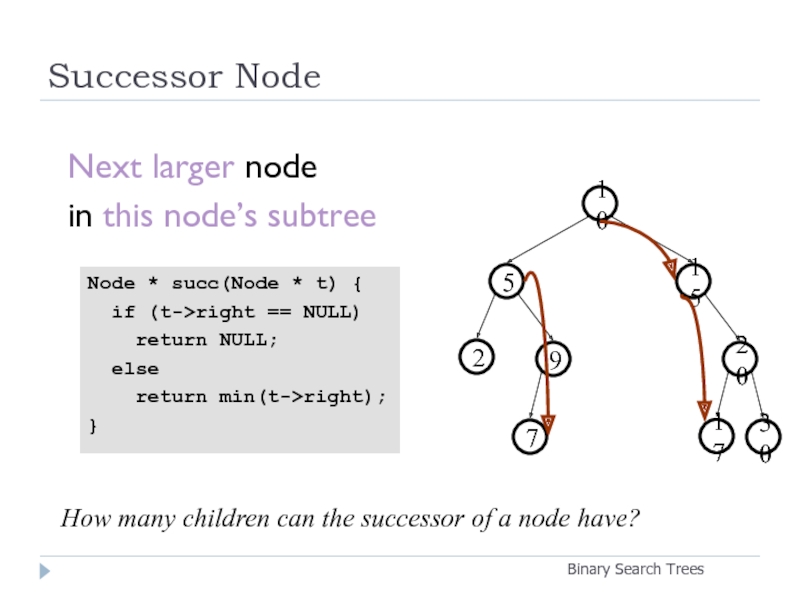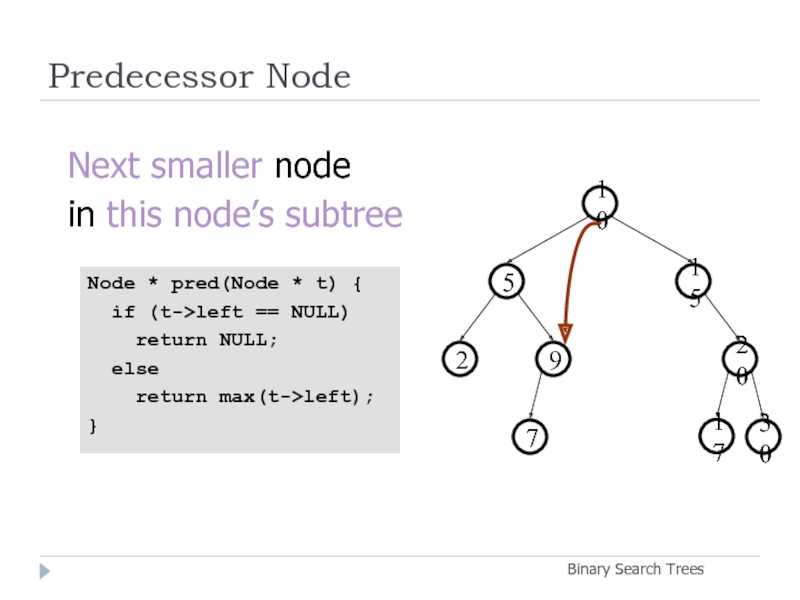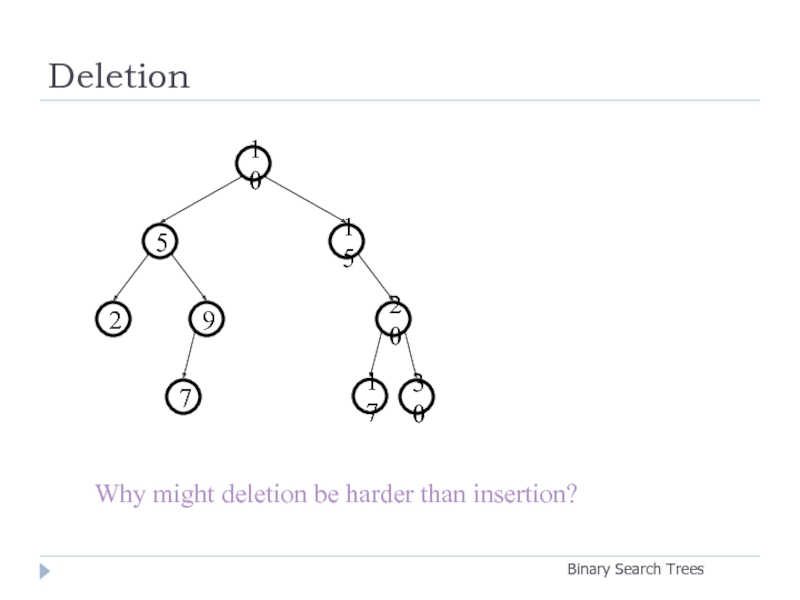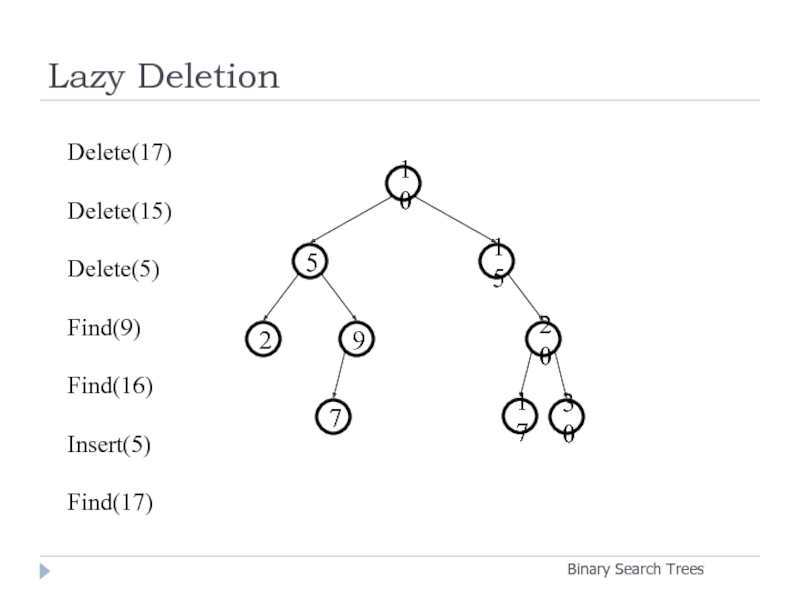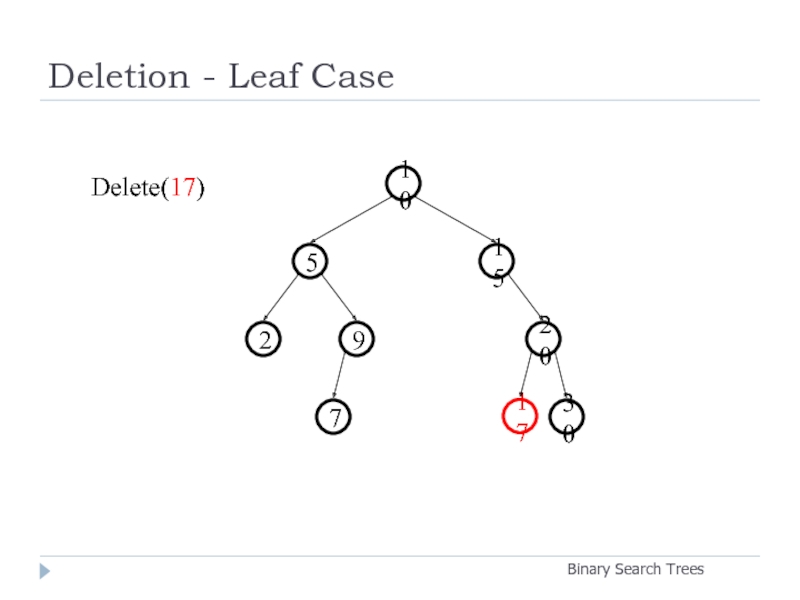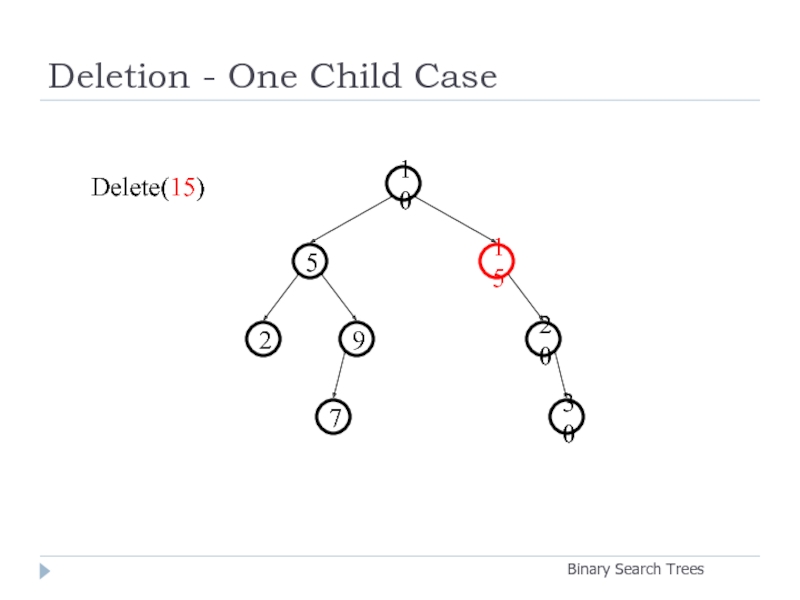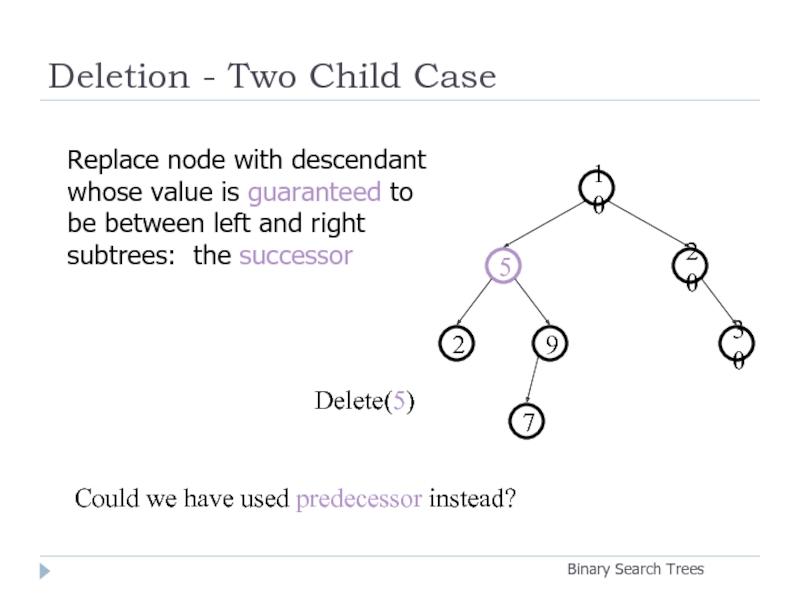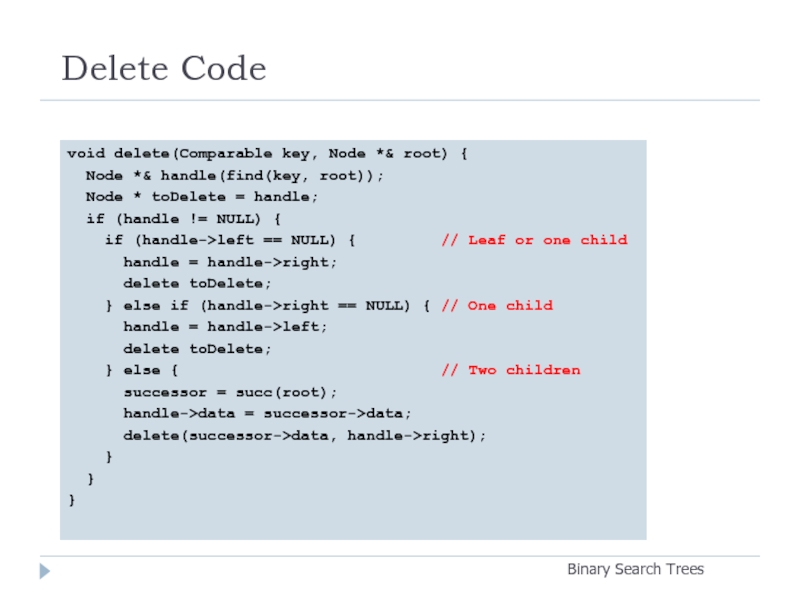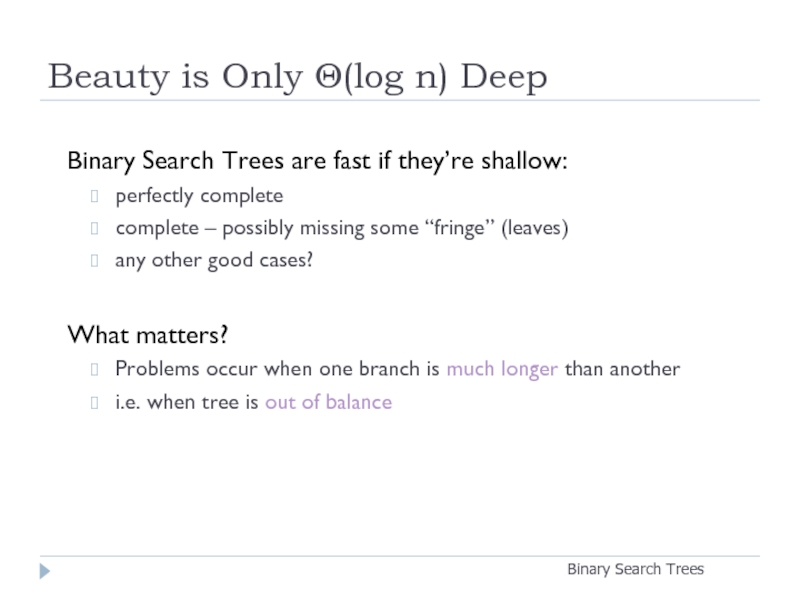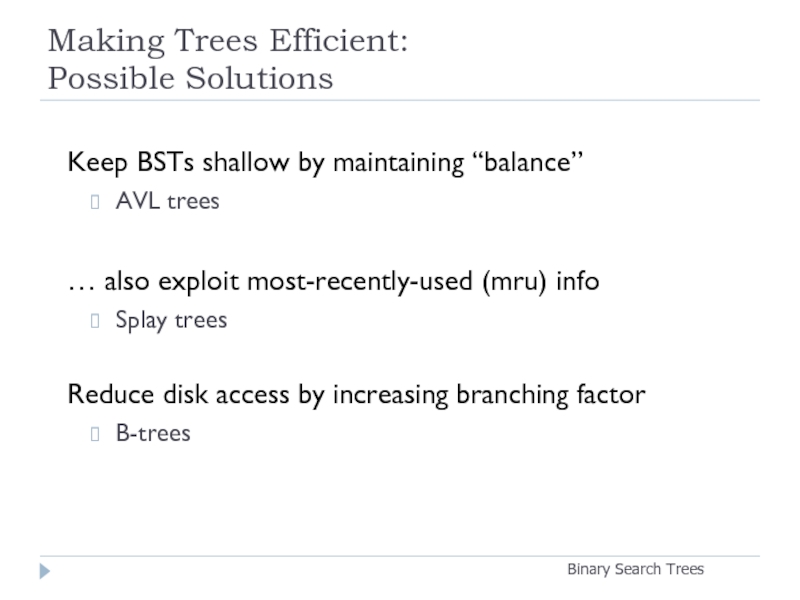- Главная
- Разное
- Дизайн
- Бизнес и предпринимательство
- Аналитика
- Образование
- Развлечения
- Красота и здоровье
- Финансы
- Государство
- Путешествия
- Спорт
- Недвижимость
- Армия
- Графика
- Культурология
- Еда и кулинария
- Лингвистика
- Английский язык
- Астрономия
- Алгебра
- Биология
- География
- Детские презентации
- Информатика
- История
- Литература
- Маркетинг
- Математика
- Медицина
- Менеджмент
- Музыка
- МХК
- Немецкий язык
- ОБЖ
- Обществознание
- Окружающий мир
- Педагогика
- Русский язык
- Технология
- Физика
- Философия
- Химия
- Шаблоны, картинки для презентаций
- Экология
- Экономика
- Юриспруденция
Binary Search Trees презентация
Содержание
- 1. Binary Search Trees
- 2. Binary Trees Binary Search Trees Binary tree
- 3. Binary Tree Representation Binary Search Trees A B D E C F
- 4. Dictionary ADT Binary Search Trees Dictionary operations
- 5. Dictionary ADT: Used Everywhere Binary Search Trees
- 6. Search ADT Binary Search Trees Dictionary operations
- 7. Dictionary Data Structure: Requirements Binary Search Trees
- 8. Naïve Implementations Binary Search Trees
- 9. Binary Search Tree Dictionary Data Structure
- 10. Example and Counter-Example Binary Search Trees 3
- 11. Complete Binary Search Tree Binary Search Trees
- 12. In-Order Traversal Binary Search Trees visit left
- 13. Recursive Find Binary Search Trees Node *
- 14. Iterative Find Binary Search Trees Node *
- 15. Insert Binary Search Trees void insert(Comparable x,
- 16. BuildTree for BSTs Binary Search Trees Suppose
- 17. Analysis of BuildTree Binary Search Trees Worst
- 18. BST Bonus: FindMin, FindMax Binary Search Trees
- 19. Successor Node Binary Search Trees Next larger
- 20. Predecessor Node Binary Search Trees 20 9
- 21. Deletion Binary Search Trees 20 9 2
- 22. Lazy Deletion Binary Search Trees Instead of
- 23. Lazy Deletion Binary Search Trees 20 9
- 24. Deletion - Leaf Case Binary Search Trees
- 25. Deletion - One Child Case Binary Search
- 26. Deletion - Two Child Case Binary Search
- 27. Delete Code Binary Search Trees void delete(Comparable
- 28. Thinking about Binary Search Trees Binary
- 29. Beauty is Only Θ(log n) Deep Binary
- 30. Dictionary Implementations Binary Search Trees BST’s looking
- 31. Digression: Tail Recursion Binary Search Trees Tail
- 32. Making Trees Efficient: Possible Solutions Binary Search
Слайд 2Binary Trees
Binary Search Trees
Binary tree is
a root
left subtree (maybe empty)
right
Properties
max # of leaves:
max # of nodes:
average depth for N nodes:
Representation:
A
B
D
E
C
F
H
G
J
I
Слайд 4Dictionary ADT
Binary Search Trees
Dictionary operations
create
destroy
insert
find
delete
Stores values associated with user-specified keys
values may
keys may be any (homogeneous) comparable type
Adrien
Roller-blade demon
Hannah
C++ guru
Dave
Older than dirt
…
insert
find(Adrien)
Adrien
Roller-blade demon
Donald
l33t haxtor
Слайд 5Dictionary ADT:
Used Everywhere
Binary Search Trees
Arrays
Sets
Dictionaries
Router tables
Page tables
Symbol tables
C++ structures
…
Anywhere we need
Слайд 6Search ADT
Binary Search Trees
Dictionary operations
create
destroy
insert
find
delete
Stores only the keys
keys may be any
quickly tests for membership
Simplified dictionary, useful for examples (e.g. CSE 326)
Adrien
Hannah
Dave
…
insert
find(Adrien)
Adrien
Donald
Слайд 7Dictionary Data Structure:
Requirements
Binary Search Trees
Fast insertion
runtime:
Fast searching
runtime:
Fast deletion
runtime:
Слайд 9Binary Search Tree
Dictionary Data Structure
Binary Search Trees
Binary tree property
each node
result:
storage is small
operations are simple
average depth is small
Search tree property
all keys in left subtree smaller than root’s key
all keys in right subtree larger than root’s key
result:
easy to find any given key
Insert/delete by changing links
4
12
10
6
2
11
5
8
14
13
7
9
Слайд 10Example and Counter-Example
Binary Search Trees
3
11
7
1
8
4
5
4
18
10
6
2
11
5
8
20
21
BINARY SEARCH TREE
NOT A
BINARY SEARCH TREE
7
15
Слайд 11Complete Binary Search Tree
Binary Search Trees
Complete binary search tree
(aka binary heap):
Links
7
17
9
3
15
5
8
1
4
6
Слайд 12In-Order Traversal
Binary Search Trees
visit left subtree
visit node
visit right subtree
What does this
20
9
2
15
5
10
30
7
17
In order listing:
2→5→7→9→10→15→17→20→30
Слайд 13Recursive Find
Binary Search Trees
Node *
find(Comparable key, Node * t)
{
if (t
else if (key < t->key)
return find(key, t->left);
else if (key > t->key)
return find(key, t->right);
else
return t;
}
20
9
2
15
5
10
30
7
17
Runtime:
Best-worse case?
Worst-worse case?
f(depth)?
Слайд 14Iterative Find
Binary Search Trees
Node *
find(Comparable key, Node * t)
{
while (t
{
if (key < t->key)
t = t->left;
else
t = t->right;
}
return t;
}
20
9
2
15
5
10
30
7
17
Слайд 15Insert
Binary Search Trees
void
insert(Comparable x, Node * t)
{
if ( t ==
t = new Node(x);
} else if (x < t->key) {
insert( x, t->left );
} else if (x > t->key) {
insert( x, t->right );
} else {
// duplicate
// handling is app-dependent
}
Concept:
Proceed down tree as in Find
If new key not found, then insert a new node at last spot traversed
Слайд 16BuildTree for BSTs
Binary Search Trees
Suppose the data 1, 2, 3, 4,
in order
in reverse order
median first, then left median, right median, etc.
Слайд 17Analysis of BuildTree
Binary Search Trees
Worst case is O(n2)
1 + 2 +
Average case assuming all orderings equally likely:
O(n log n)
averaging over all insert sequences (not over all binary trees)
equivalently: average depth of a node is log n
proof: see Introduction to Algorithms, Cormen, Leiserson, & Rivest
Слайд 19Successor Node
Binary Search Trees
Next larger node
in this node’s subtree
20
9
2
15
5
10
30
7
17
How many children
Node * succ(Node * t) {
if (t->right == NULL)
return NULL;
else
return min(t->right);
}
Слайд 20Predecessor Node
Binary Search Trees
20
9
2
15
5
10
30
7
17
Next smaller node
in this node’s subtree
Node * pred(Node
if (t->left == NULL)
return NULL;
else
return max(t->left);
}
Слайд 22Lazy Deletion
Binary Search Trees
Instead of physically deleting nodes, just mark them
simpler
physical deletions done in batches
some adds just flip deleted flag
extra memory for deleted flag
many lazy deletions slow finds
some operations may have to be modified (e.g., min and max)
20
9
2
15
5
10
30
7
17
Слайд 23Lazy Deletion
Binary Search Trees
20
9
2
15
5
10
30
7
17
Delete(17)
Delete(15)
Delete(5)
Find(9)
Find(16)
Insert(5)
Find(17)
Слайд 26Deletion - Two Child Case
Binary Search Trees
30
9
2
20
5
10
7
Delete(5)
Replace node with descendant whose
Could we have used predecessor instead?
Слайд 27Delete Code
Binary Search Trees
void delete(Comparable key, Node *& root) {
Node
Node * toDelete = handle;
if (handle != NULL) {
if (handle->left == NULL) { // Leaf or one child
handle = handle->right;
delete toDelete;
} else if (handle->right == NULL) { // One child
handle = handle->left;
delete toDelete;
} else { // Two children
successor = succ(root);
handle->data = successor->data;
delete(successor->data, handle->right);
}
}
}
Слайд 28Thinking about
Binary Search Trees
Binary Search Trees
Observations
Each operation views two new
Elements (even siblings) may be scattered in memory
Binary search trees are fast if they’re shallow
Realities
For large data sets, disk accesses dominate runtime
Some deep and some shallow BSTs exist for any data
Слайд 29Beauty is Only Θ(log n) Deep
Binary Search Trees
Binary Search Trees are
perfectly complete
complete – possibly missing some “fringe” (leaves)
any other good cases?
What matters?
Problems occur when one branch is much longer than another
i.e. when tree is out of balance
Слайд 30Dictionary Implementations
Binary Search Trees
BST’s looking good for shallow trees, i.e. if
Слайд 31Digression: Tail Recursion
Binary Search Trees
Tail recursion: when the tail (final operation)
Why is tail recursion especially bad with a linked list?
Why might it be a lot better with a tree? Why might it not?
Слайд 32Making Trees Efficient:
Possible Solutions
Binary Search Trees
Keep BSTs shallow by maintaining “balance”
AVL
… also exploit most-recently-used (mru) info
Splay trees
Reduce disk access by increasing branching factor
B-trees

